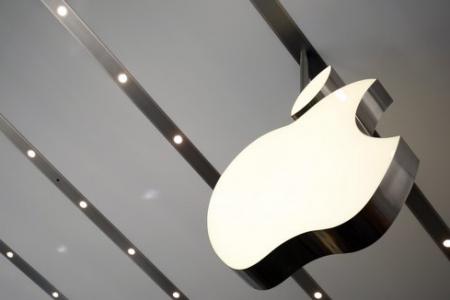Old iPhones key to Apple's new plans
CEO Tim Cook reversing Steve Jobs' policy of killing off old products
By delivering solid financial results that beat Wall Street's expectations for both revenues and profits on Thursday, Apple Inc's CEO Tim Cook put to rest concerns that the company's flagship device, the iPhone X, would not be ready in time for the holiday shopping season.
Apple sold 46.7 million iPhones in the fourth quarter ended Sept 30, above analysts' estimates of 46.4 million, according to financial data and analytics firm FactSet.
The company's net income rose to US$10.71 billion (S$14.5 billion), or US$2.07 per share, in the quarter, from US$9.01 billion, or US$1.67 per share, a year earlier.
That beat the average analyst estimate of US$1.87 per share.
But beneath the headline revenue and profit figures, Mr Cook also seemed to have solved two of Apple's longest-standing problems: its heavy reliance on the latest flagship iPhone to buoy its profits, and its lack of affordable offerings to help budget-minded buyers see the benefits of joining Apple's ecosystem of hardware and software.
And all Mr Cook had to do was stop Apple's unusual Steve Jobs-era policy of ruthlessly killing off old products when better ones came along.
To see the effect of the Cook Doctrine, look no further than Apple's current, unprecedented line-up of five different iPhones.
The flagship iPhone X, priced at US$999, has drawn most of the media attention for the holiday shopping season.
IPHONE SE
But far from the limelight is the humble iPhone SE - essentially an updated iPhone 5, which came out five years ago.
It retails for only US$349 and appears to have played a major role in Apple doubling its revenue in India, an important emerging market.
Mr Cook told investors on a conference call discussing Thursday's financial results that "a majority" of the iPhone SEs the company sold in India were also manufactured there, a critical component of Apple's negotiations with the Indian government for market access.
Former Apple CEO Jobs would never have kept a product like the SE around.
The iPod Mini, a svelte version of what was then Apple's flagship gadget, lasted just a year and a half. Jobs killed that product and replaced it with the iPad Nano, which was even smaller.
The Cook Doctrine of letting older models linger and drop in price appears to be working.
Apple shipped 46.6 million iPhones in its fiscal fourth quarter,though with lower average selling prices.
That doesn't mean Apple is leaving profits on the table. On the contrary, more phones - whatever the price - help boost the services business, which includes Apple Music and the App Store. Services brought in US$8.5 billion in revenue in the quarter compared with analyst estimates of US$7.5 billion, though that included a favourable $640 million adjustment.
The bet Mr Cook seems to be making is that if Apple lowers the price of entry for getting a taste of its flagship iOS operating system, its customers will want to spend more money in Apple's ecosystem. So far, that bet is paying off. - REUTERS
Get The New Paper on your phone with the free TNP app. Download from the Apple App Store or Google Play Store now


